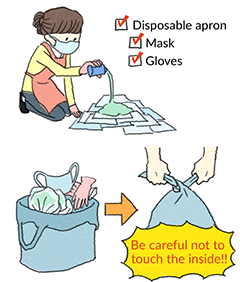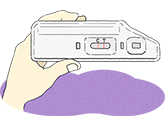Norovirus: infection routes and infection prevention
Infection routes
Oral infection
Oral infections can occur if you eat raw or not fully cooked bivalve clams such as oysters that are infected with norovirus. Oral infections can also occur by eating foods touched by fingers infected with the virus, such as those of infected chefs and serving staff.
Contact infection
Contact infections occur when the fingers become infected with norovirus by coming into direct contact with the stool or vomit of an infected person. Contact infections also occur through contact with toilet doorknobs, for example, that were touched by an infected person who did not wash his or her hands sufficiently after defecating.
Droplet infection
Droplet infections occur if for example, you are close to an infected person when they vomit and you inhale droplets of that containing the virus.
Airborne infection (dust infection)
When the stool or vomit of an infected person dries norovirus can drift through the air together with dust that it has become attached to. The infection occurs if you inhale that dust, or the virus ultimately gets into your mouth after latching on to your body.
Infection prevention
Prevention of primary infection (infection from eating infected food)
Refrain from eating raw food and heat foods thoroughly. Japan's Ministry of Health, Labour and Welfare recommends cooking foods for at least one minute at 85℃.
Prevention of secondary infection (infection spreading from an infected person to other people)
Persons engaged in food preparation should make sure they wash their hands with soap before cooking and serving dishes, and after using the toilet. It is also important to not engage in food preparation when you have symptoms such as diarrhea.

Always wear a mask, gloves, and a disposable gown or apron when cleaning up stool or vomit. First, cover the stool or vomit with layers of tissue paper to prevent it from splattering. Then, spray some undiluted chlorine bleach on top and let it sit for 15 to 30 minutes. Pick the material up in a plastic bag, seal it and throw it away. Next, wipe the area with 200ppm sodium hypochlorite solution* and then again with water. Finally, seal the used mask, gloves, and disposable gown (apron) in a plastic bag and throw it away.
- *One capful (about 20mL) of commercially available chlorine bleach added to five liters of water






